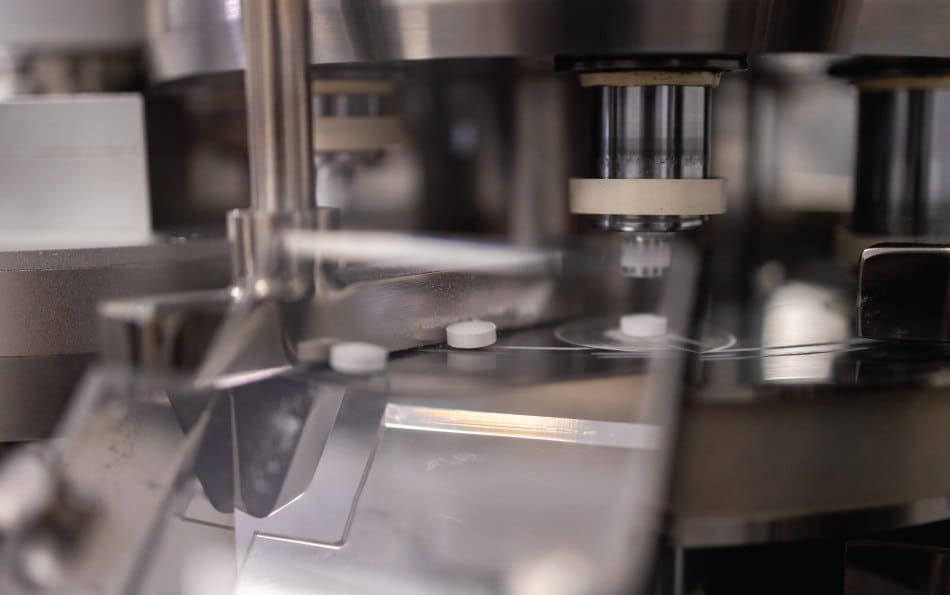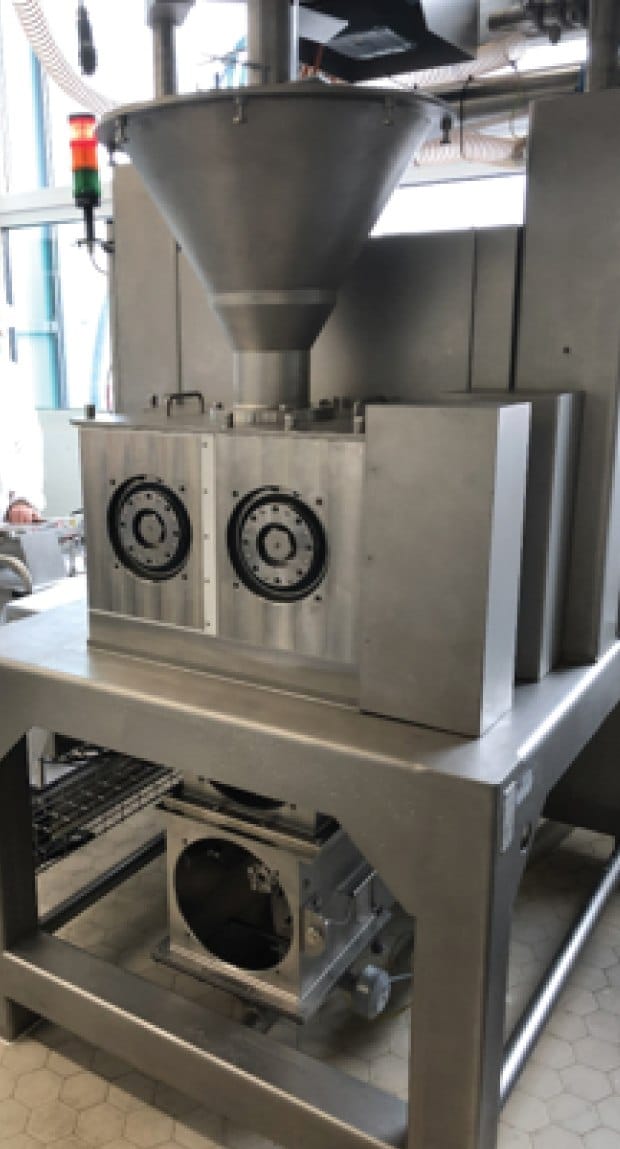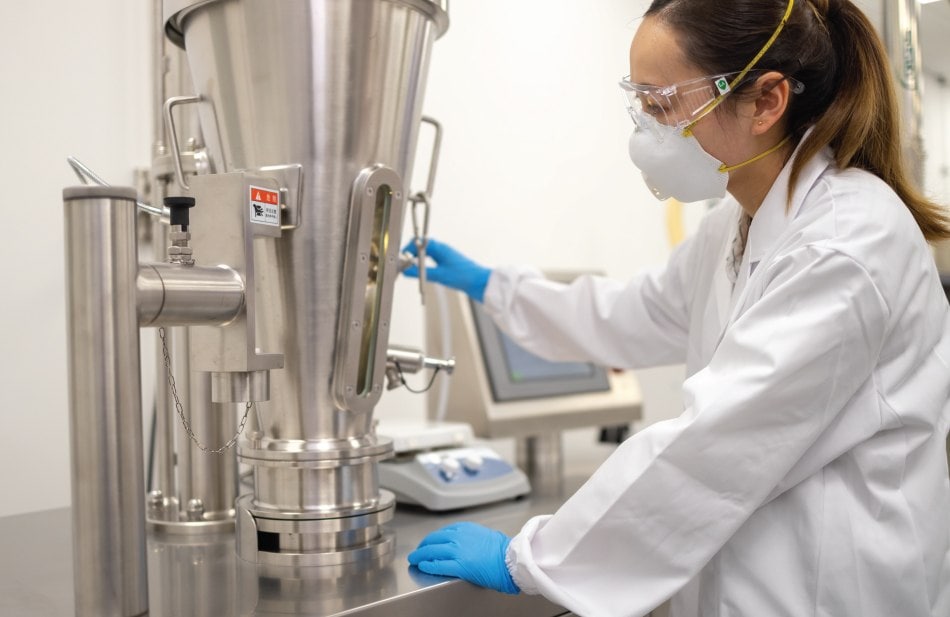Tablet Manufacturing Technologies for Solid Drug Formulation
Overview of Common Tablet Manufacturing Technologies
Compressed tablets typically consist of the active pharmaceutical ingredient (API) along with a range of excipients fulfilling various functions as fillers, binders, disintegrants, lubricants, glidants, colorants and taste modifiers. In many cases, the compressed tablet is coated which requires adding excipients such as a coating polymer, plasticizers, and pigments to the final list of formulation ingredients.
Despite being one of the most widely used oral solid dosage forms, formulating compressed tablets can be challenging. A critical first step is selecting a suitable manufacturing approach and the right excipients for the formulation from a range of options that can support the desired therapeutic effect by optimizing the release kinetics, stability, and API solubility.

Among the most common techniques for tablet manufacturing are direct compression, dry granulation, and wet granulation.
Read more about
- Direct Compression for Tablet Manufacturing
- Granulation for Tablet Manufacturing
- Formulation Workflow
- Dry Granulation
- Wet Granulation
- Continuous Manufacturing
- Advantages of Mannitol in Tableting Processes
Direct Compression for Tablet Manufacturing
Direct compression (DC) is a highly efficient method for producing tablets. The process is straightforward and consists of blending the API and excipients followed by compression. Unlike other common solid formulation approaches, DC contributes to sustainability efforts as it does not require additional processing steps, does not require solvent and uses less energy in comparison to a process that uses granulation and tableting. It is also well-suited for moisture- or heat-sensitive ingredients, when wet granulation (described below) cannot be used.
Low- and high-dose APIs can present a challenge for DC in different ways. With low-dose APIs, it may be difficult to achieve the necessary homogeneity and uniformity as segregation, de-mixing, or sedimentation of the API may occur, especially if particle sizes of the formulation components are quite different.
APIs often show poor galenical properties such as sticking, poor flow, and poor compressibility. Poor flow and compressibility, common with small particle sizes or micronized APIs, can be compensated for with use of a suitable filler excipient, which would make up a relatively larger portion of a low-dose API formulation. In high dose formulations, where the API content can range from 50% to nearly 100%, fillers often can’t compensate for poor API properties. In such cases, typically dry or wet granulation methods are used as the resulting granules have improved properties compared to the API powder.
Excipients with good flowability and compressibility can be used to address these challenges and ensure robust processability via DC. Specific DC grades of excipients that meet these requirements are often available. It is important to note that the particle size distribution of excipients is crucial for a stable mixture. For many excipients, there are different grades available with different particle sizes to meet different needs. For example, excipients with very high surface areas can help stabilize a mixture by adsorbing micronized APIs on their surface.
Granulation for Tablet Manufacturing
Different options for tableting should be considered as each method has its own advantages and disadvantages and the selected approach will have important process and business consequences.
While DC should always be considered for tableting as it is a highly efficient and straightforward approach, and many excipients are designed to address challenges that may arise in DC processes, there are cases in which use of DC is not feasible. In these situations, granulation can be used as an additional process step prior to tableting.
The granulation process enables particle enlargement by agglomeration. It eliminates undesirable powder characteristics and delivers the properties required for subsequent process steps by improving content uniformity, flowability and compressibility. Granulation is, however, more time-consuming than DC, and there is a risk of product cross-contamination and product loss during the granulation, drying, and sieving steps. These factors can also contribute to a higher cost compared to DC.
Differences between wet and dry granulation processes are shown in the formulation workflow and benefits and drawbacks of the respective approaches in comparison to DC are summarized in Table 1.
Formulation Workflow:
- Dry Granulation: Does not require liquid/binders; no change of chemical composition
- Slugging
- Typically uses a tableting machine or rotary press to form “slugs”
- Slugs are broken by e.g. a hammer mill to form granules
- High-pressure method
- Roller Compaction
- Compression between two rotating rollers into plates or sheets
- Plates are milled into granules
- Gentler than slugging
- Slugging
- Wet Granulation: needs binders; change of chemical composition
Table 1: Benefits and drawbacks of common granulation techniques used in solid oral dose manufacturing in comparison to direct compression.
|
Direct compression |
Dry granulation |
Wet granulation |
Short description |
|
|
|
Decision basis |
|
|
|
Pros |
|
|
|
Cons |
|
|
|

Dry granulation (DG) incorporates mechanical compression either by slugging or roller compaction while wet granulation (WG) uses a liquid and typically a binder to facilitate agglomeration of the powder particles.
Forming granules without liquid using the DG technique requires compacting the mix followed by size reduction of the compacts to the desired particle size.
DG can be used to improve flow properties and prevent segregation of components in cases where DC processes reach their limits, and to avoid API degradation induced by WG. Because it does not use moisture, DG is especially well-suited for APIs that are sensitive to solvents or moisture. Compared to wet granulation, DG is a shorter, more cost-effective manufacturing process.
As outlined in Figure 1, DG can be performed in two ways – slugging or roller compaction. With slugging, tableting presses are used to form large tablets (slugs) which are then broken by a hammer mill to form granules. In roller compaction, the raw material is compressed into plates or sheets between two rotating rollers, which are then milled into granules. Compared to slugging, roller compaction is very gentle, making it the preferred approach with heat- and moisture-sensitive materials.
Another benefit of using a roller compactor is that the auger-feed system delivers the powder materials consistently between the two rollers. In contrast, poor flow properties of the material may result in various degrees of densification of the compacts produced using table press compaction.

In WG, a liquid and typically a binder is used to granulate the powder and the process requires blending, wetting, wet mass stage, drying, and sizing. The binder is typically a polymer such as polyvinyl alcohol (PVA), polyvinylpyrrolidone (PVP), copovidone, starch or cellulose derivatives dissolved in either an aqueous or organic solvent.
While aqueous solutions are eco-friendly and relatively less expensive than organic solvents, they can have a longer drying time. Examples of organic solvents used in WG are ethanol and propanol.
Several approaches to WG are available:
- High-shear processes use equipment that mixes the powder and liquid using high shear forces, accelerating the manufacturing process.
- Twin-screw granulation continuously manufactures wet granulate powders at lower liquid concentrations and with improved product consistency.
- Fluid bed granulation is a multiple-step WG process in which the powders are pre-heated, granulated, and dried in the same vessel. This technique allows close control of the granulation process.
Success of the WG process depends on selection of appropriate excipients and choice of suitable process parameters which lead to the desired binding and compaction properties and flow. As noted above, among the most widely used binders are PVA, PVP, copovidone, starch, and cellulose derivatives; commonly used fillers in oral dosage forms include lactose, microcrystalline cellulose (MCC), calcium phosphates, and mannitol.
Continuous Manufacturing
All of these tableting technologies can be either applied in traditional, stepwise, batch manufacturing or as part of a continuous manufacturing process.
With continuous processes, it is important that the individual components show good flowability to ensure consistent and support a precise feed and throughput which, in turn, ensures a consistent quality and performance of the final product. Also, in-process control is critical for continuous processes and implementation of process analytical technology is key (in comparison to batch processes, where the final product is tested and released for each batch).
Overall, continuous manufacturing offers several advantages compared to batch manufacturing including:
- Improved efficiency with a single, end-to-end process operating in one location
- Elimination of the need for scale-up to larger equipment
- Greater consistency in final product quality
- Reduced risk of human error with the use of in-process controls
- Greater flexibility as production speed controls output
- Reduced manual handling and less time needed for equipment cleaning
Advantages of Mannitol in Tableting Processes
When used as a filler in DC, WG, and DG, mannitol offers important advantages including low hygroscopicity chemical inertness, compactibility, and the ability to form extremely robust tablets. A pleasant taste and mouth feel enables use for chewable, sublingual, and orodispersible tablet formulations. In addition, mannitol is also suitable for use in continuous manufacturing; certain grades such as Parteck® M mannitol are highly suitable for such processes due to their excellent flowability, compressibility and effect on blend uniformity for low dose formulations.
Learn more about formulation development and guidelines for these manufacturing processes and suitable excipients in our Formulation Handbook.
Related Products
如要继续阅读,请登录或创建帐户。
暂无帐户?